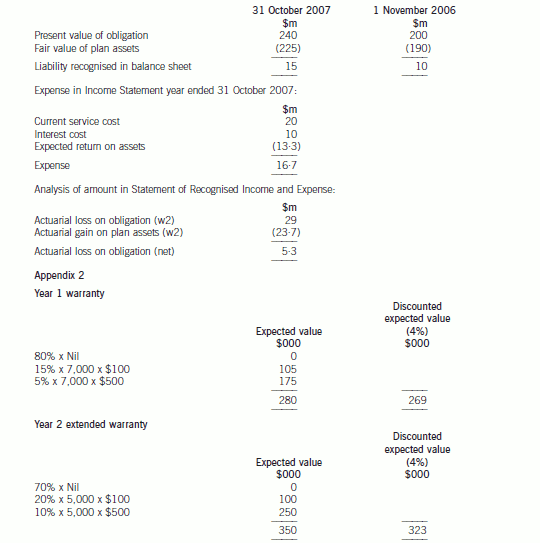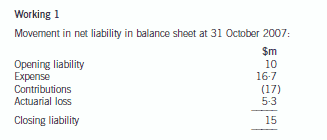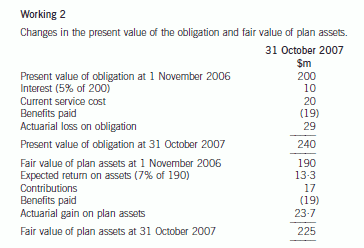看看有你所在的重庆市有上榜吗——ACCA中国考点分布城市
发布时间:2020-01-08
还有两个多月的时间就又要迎来新的一季ACCA考试了。备考的ACCAer们准备的怎么样了呢?虽然现在看似时间还算充足,但除去周末和春节假日,给大家复习的时间其实已经不算太多了。因此,51题库考试学习网建议有参加3月份考试的ACCAer们现在开始可以着手准备啦!什么?你竟然不知道考试地点在哪里?不用担心,51题库考试学习网会为大家解决这个问题,快来看看离家近不近呢?由于目前2020年3月份的ACCA考试地点暂未公布,大家可以参考一下往年的考试地址,根据考试时间和地点提前做好相应的安排,避免考试迟到:
北京考点
I998北京广播电视大学
海淀区大钟寺东路5号北京广播电视大学4号教学楼(北三环大钟寺古钟博物馆往北500米)
I837首都经济贸易大学红庙校区
北京朝阳门外红庙金台里2号4号教学楼
I866北京市教育考试指导中心
北京市安定门外外馆东街23号
河北考点
I769保定
河北省保定市恒祥北大街3188号河北金融学院东门教学楼C区1楼071051
上海考点
I987上海东北
上海开放大学(主校区),国顺路288号
I997上海西南
好望角大饭店,肇嘉浜路500号;青松城大酒店,肇嘉浜路777号
I844上海浦东
上海海事大学(东明路校区),东明路1336号
I849松江
上海市松江区文翔路1900号上海对外贸易学院松江校区
长沙考点地址:
I900长沙考点
湖南大众传媒职业技术学院南院,湖南省长沙市新建西路77号湖南大众传媒职业技术学院新教学楼
重庆考点
I893重庆
具体地址目前待定,届时会在您的准考证中直接显示
成都考点
I803成都市人才培训中心(成都市人事考试中心),四川省成都市中南大街56号,
I803四川大学出国留学人员培训部,四川省成都市科华北路(川大西门)
以上就是关于ACCA考试的部分考点地址,希望对你备考ACCA的你有所帮助。最后,51题库考试学习网祝福ACCAer们旗开得胜,相信自己,加油~
下面小编为大家准备了 ACCA考试 的相关考题,供大家学习参考。
11 Which of the following statements are correct?
1 A company might make a rights issue if it wished to raise more equity capital.
2 A rights issue might increase the share premium account whereas a bonus issue is likely to reduce it.
3 A bonus issue will reduce the gearing (leverage) ratio of a company.
4 A rights issue will always increase the number of shareholders in a company whereas a bonus issue will not.
A 1 and 2
B 1 and 3
C 2 and 3
D 2 and 4
(b) (i) Discusses the principles involved in accounting for claims made under the above warranty provision.
(6 marks)
(ii) Shows the accounting treatment for the above warranty provision under IAS37 ‘Provisions, Contingent
Liabilities and Contingent Assets’ for the year ended 31 October 2007. (3 marks)
Appropriateness of the format and presentation of the report and communication of advice. (2 marks)
(b) Provisions – IAS37
An entity must recognise a provision under IAS37 if, and only if:
(a) a present obligation (legal or constructive) has arisen as a result of a past event (the obligating event)
(b) it is probable (‘more likely than not’), that an outflow of resources embodying economic benefits will be required to settle
the obligation
(c) the amount can be estimated reliably
An obligating event is an event that creates a legal or constructive obligation and, therefore, results in an enterprise having
no realistic alternative but to settle the obligation. A constructive obligation arises if past practice creates a valid expectation
on the part of a third party. If it is more likely than not that no present obligation exists, the enterprise should disclose a
contingent liability, unless the possibility of an outflow of resources is remote.
The amount recognised as a provision should be the best estimate of the expenditure required to settle the present obligation
at the balance sheet date, that is, the amount that an enterprise would rationally pay to settle the obligation at the balance
sheet date or to transfer it to a third party. This means provisions for large populations of events such as warranties, are
measured at a probability weighted expected value. In reaching its best estimate, the entity should take into account the risks
and uncertainties that surround the underlying events.
Expected cash outflows should be discounted to their present values, where the effect of the time value of money is material
using a risk adjusted rate (it should not reflect risks for which future cash flows have been adjusted). If some or all of the
expenditure required to settle a provision is expected to be reimbursed by another party, the reimbursement should be
recognised as a separate asset when, and only when, it is virtually certain that reimbursement will be received if the entity
settles the obligation. The amount recognised should not exceed the amount of the provision. In measuring a provision future
events should be considered. The provision for the warranty claim will be determined by using the expected value method.
The past event which causes the obligation is the initial sale of the product with the warranty given at that time. It would be
appropriate for the company to make a provision for the Year 1 warranty of $280,000 and Year 2 warranty of $350,000,
which represents the best estimate of the obligation (see Appendix 2). Only if the insurance company have validated the
counter claim will Macaljoy be able to recognise the asset and income. Recovery has to be virtually certain. If it is virtually
certain, then Macaljoy may be able to recognise the asset. Generally contingent assets are never recognised, but disclosed
where an inflow of economic benefits is probable.
The company could discount the provision if it was considered that the time value of money was material. The majority of
provisions will reverse in the short term (within two years) and, therefore, the effects of discounting are likely to be immaterial.
In this case, using the risk adjusted rate (IAS37), the provision would be reduced to $269,000 in Year 1 and $323,000 in
Year 2. The company will have to determine whether this is material.
Appendix 1
The accounting for the defined benefit plan is as follows:



1 Oliver Hoppe has been working at Hoopers and Henderson accountancy practice for eighteen months. He feels that
he fits in well, especially with his colleagues and has learnt a lot from them. However, he feels that the rules and
regulations governing everyday activities and time keeping are not clear.
Oliver does not get on well with his line manager, David Morgan. There appears to be a clash of personalities and
reluctance on David Morgan’s part to deal with the icy atmosphere between them after David was asked by one of
the accounting partners to give Oliver a job. For the past three months Oliver has gone to lunch with his fellow workers
and always returned to work with them or before them. In fact they all have returned to work about ten minutes late
on several previous occasions. After the third time, Oliver was called into David Morgan’s office and given an oral
warning about his time keeping.
Oliver was not permitted to argue his case and none of the other staff who returned late were disciplined in this way.
On the next occasion the group was late returning from lunch, David Morgan presented Oliver with a written warning
about his time keeping.
Yesterday, Oliver was five minutes late returning to work. His colleagues returned after him. David Morgan gave Oliver
notice and told him to work until the end of the week and then collect his salary, the necessary paperwork and to
leave the practice.
There is a partner responsible for human resources. Oliver has come to see the partner to discuss the grievance
procedures against David Morgan for his treatment and about what Oliver regards as unfair dismissal.
Required:
(a) Describe the six stages of a formal disciplinary procedure that an organisation such as Hoopers and
Henderson should have in place. (12 marks)
1 Overview
A grievance occurs when an individual thinks that he or she has been wrongly treated by colleagues or management, especially
in disciplinary matters. An unresolved feeling of grievance can often lead to further problems for the organisation. The purpose of
procedures is to resolve disciplinary and grievance issues to the satisfaction of all concerned and as early as possible.
If a grievance perceived by an employee is not resolved, then conflict and discontent can arise that will affect the work of the
individual and the organisation. Accountants as managers need to be aware of the need to resolve grievances satisfactorily and
professionally.
The fundamental basis of organisational disciplinary and grievance procedures is that they must be explicitly clear and accessible
to all.
Part (a):
An official and correctly applied disciplinary procedure has six steps which should be followed in the correct order and applied
equitably.
The Informal Talk.
This is the first step. If the disciplinary matter is of a minor nature and the individual has had until this occasion a good record,
then an informal meeting can often resolve the issue.
Reprimand or Oral Warning.
Here the manager draws the attention of the employee to unsatisfactory behaviour, a repeat of which could lead to formal
disciplinary proceedings.
Official or Written Warning.
A written warning is a serious matter. It draws the attention of the offending employee to a serious breach of conduct and remains
a recorded document on the employee’s employment history.
Such written documents can be used as evidence if further action is taken, especially dismissal.
Suspension or Lay-off.
If an offence is of a serious nature, if the employee has repeated an earlier offence or if there have been repeated problems then
an employee may be suspended from work for a period of time without pay.
Demotion.
This is a situation where an employee is demoted to a lower salary or position within an organisation. This is a very serious step
to take and can be regarded as a form. of internal dismissal. This course of action can have negative repercussions because the
employee concerned will feel dissatisfied and such feelings can affect their own work and that of others.
Dismissal.
This is the ultimate disciplinary measure and should be used only in the most extreme cases. As with demotion, the dismissal of
a staff member can lead to wider dissatisfaction amongst the employees.
The employee may nominate a representative at any stage of the procedure, especially at the more serious stages.
声明:本文内容由互联网用户自发贡献自行上传,本网站不拥有所有权,未作人工编辑处理,也不承担相关法律责任。如果您发现有涉嫌版权的内容,欢迎发送邮件至:contact@51tk.com 进行举报,并提供相关证据,工作人员会在5个工作日内联系你,一经查实,本站将立刻删除涉嫌侵权内容。
- 2020-01-10
- 2019-12-29
- 2020-01-09
- 2021-10-09
- 2021-04-17
- 2020-01-09
- 2020-04-30
- 2020-04-19
- 2020-01-09
- 2020-01-30
- 2020-08-12
- 2020-03-06
- 2020-01-09
- 2020-01-09
- 2021-05-22
- 2021-05-23
- 2020-02-28
- 2020-02-27
- 2020-07-04
- 2021-05-22
- 2020-02-23
- 2021-01-13
- 2020-08-13
- 2021-06-27
- 2021-04-17
- 2020-07-04
- 2020-01-08
- 2020-02-20
- 2020-01-08
- 2021-02-25